De_dust2: Anatomy of an FPS Icon Counter-Strike: Source.
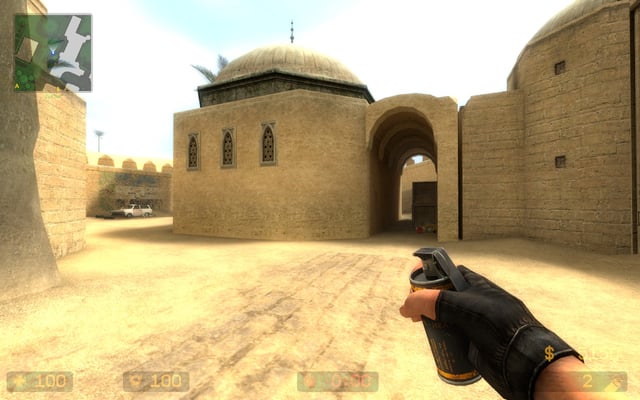
Counter-Strike: Source. Those three words evoke a flood of memories – late nights, frantic comms, and the constant pursuit of that next CAL-Invite win. The game was a phenomenon, and at the heart of it all lay a single map: de_dust2. I remember one particular CAL match in 2007. We were down match point on A long. A teammate went down early, leaving me in a 1v3. I managed to clutch it with some lucky headshots and a well-placed smoke, securing the round and eventually the win. That map wasn't just a collection of polygons; it was an arena where legends were forged. But de_dust2 wasn't just luck. Its genius lies in its design, which created a canvas for countless strategic encounters. Today, as a level designer working on VR FPS games, I look back at de_dust2 not just with nostalgia, but as a masterclass in FPS level design that continues to inform my work.
Key Areas and Design Elements
De_dust2’s brilliance lies in its simplicity and balance. The map is divided into distinct areas, each serving a specific purpose in the overall strategic flow. Let’s break down the key components.
Long A
Long A is a classic example of a high-risk, high-reward chokepoint. The long corridor funnels players into a direct confrontation, making it a prime location for opening engagements. The sightlines are relatively clear, favoring players with good aim and reaction time. The small wall provides crucial cover for Ts pushing onto the site, while the stack of boxes ("xbox") near the corner offers a defensive position for CTs.
The addition of the double stack of boxes ("xbox") on Long A dramatically shifted the gameplay, providing both offensive and defensive advantages. Ts could use it for cover while pushing, while CTs could use it to peek and catch Ts off guard.
Mid
Mid is the heart of de_dust2. It's a central control point that offers access to both A and B sites, making it a crucial area for both teams to contest. The various routes available – short A, window, and doors – provide ample opportunities for rotations and flanks. Controlling upper mid is vital, giving AWPers a clear line of sight down mid and allowing for quick rotations to either site. Lower mid is more suited for close-quarters combat and requires careful clearing of corners. The sound of distant gunfire echoing through mid always created a sense of constant tension. 
B Site
The B bombsite is a compact and claustrophobic area, favoring close-quarters combat. The limited entrances make it easier for CTs to defend, but also make it difficult for Ts to retake once the bomb is planted. The truck, barrels, and crates provide essential cover, allowing players to hold various angles and create crossfires. A well-coordinated CT defense can make B site feel impenetrable.
A Site
In contrast to B site, A site is more open and offers multiple entry points and tactical options. The generator provides cover for Ts pushing from long A, while the pit offers a flanking route and a defensive position for CTs. The back site area allows for rotations from mid and short A. The key to defending A site is establishing strong crossfires and controlling the key entry points.
T Spawn & CT Spawn
The placement of the spawn areas significantly influences the flow of the game. CT spawn is relatively close to both A and B sites, giving them a slight advantage in terms of rotation speed. T spawn, on the other hand, is further away, requiring Ts to plan their pushes carefully. The timing of rotations and the strategic implications of spawn placement are crucial considerations for competitive play. For instance, the distance from CT spawn to A site allows for relatively fast rotations to counter a T rush, forcing the Ts to commit to a site quickly.
Emergent Gameplay and Strategies
The design of de_dust2 encourages emergent gameplay scenarios and allows for diverse player strategies. It's not just about aim; it's about outsmarting your opponent.
- Smokes and Flashes on Long A: A well-timed smoke from T spawn can completely block CT vision at the A site entrance, allowing Ts to push onto the site with minimal risk. A flashbang thrown just before the smoke clears can further disorient the CTs, creating an opportunity for an entry frag.
- Strategic Rotations Through Mid: A quick boost on short A to peek mid window early in the round can provide valuable information about CT positions. This information can then be used to inform strategic decisions, such as rotating to B site or committing to a push on A.
- Mind Games and Fakes: The sound cues and visual deception can lead the enemy to over-rotate. A coordinated fake push on B site, with Ts firing their weapons and throwing grenades, can draw CTs away from A site, creating an opportunity for a quick A push.
- Economy Management: The decision to force buy with Tec-9s, eco with pistols only, or full buy with M4s and AWPs can significantly impact the outcome of a round. A well-timed force buy can catch the enemy off guard and swing the momentum of the game.
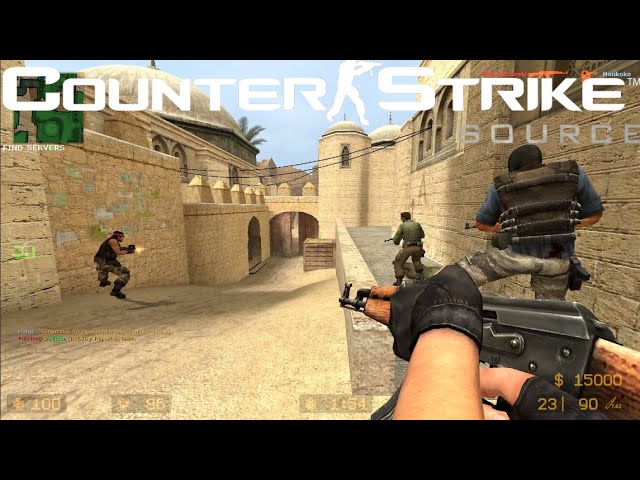
Impact and Legacy
De_dust2’s influence on other FPS maps is undeniable. Its simple yet effective layout has been emulated in countless games, and its enduring appeal continues to resonate with the competitive gaming community.
Many Valorant maps, for example, feature a similar "mid" area that serves as a central control point, reminiscent of de_dust2's design. The strategic importance of controlling key areas and establishing crossfires, as seen in de_dust2, is also evident in maps from Rainbow Six Siege and Overwatch.
Despite the iterations in newer versions of the game, de_dust2 endures because its core design principles remain timeless. It offers a balanced and engaging experience that caters to both casual and competitive players.
Adapting de_dust2 to VR FPS games would require careful consideration of the VR perspective. The map would need to be scaled appropriately to account for the player's increased sense of presence and movement. New cover options and flanking routes could be added to take advantage of the VR environment. The gameplay would also need to be adjusted to accommodate the unique challenges and opportunities of VR.
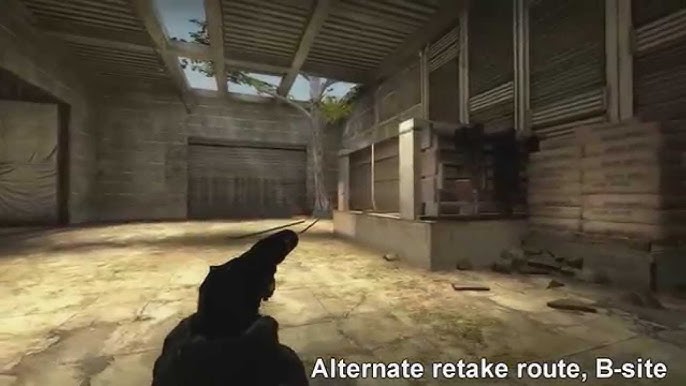
Lessons Learned
Studying and playing de_dust2 has taught me invaluable lessons about level design. As a competitive player, I learned the importance of strategic thinking, teamwork, and adaptability. As a level designer, I learned the importance of creating balanced and engaging maps that encourage emergent gameplay scenarios.
My advice to aspiring level designers is to focus on creating maps that are easy to learn but difficult to master. Avoid creating maps that are too linear or lack clear chokepoints. Strive to balance the needs of both competitive and casual players, and always prioritize gameplay over aesthetics.
De_dust2 balances the needs of competitive and casual players by providing a simple and intuitive layout that is easy for new players to learn, while also offering a wealth of strategic depth for experienced players to explore. The map's clear chokepoints and flanking routes encourage teamwork and strategic thinking, while its fast-paced gameplay and emphasis on aim provide plenty of opportunities for individual skill to shine.
One common pitfall to avoid is creating maps that are too complex or confusing. Players should be able to quickly understand the layout of the map and identify key areas of interest. Maps should also be balanced, ensuring that neither team has an unfair advantage.

Answering the Question: Why is de_dust2 so iconic?
De_dust2's design features a carefully crafted layout that fosters both simplicity for newcomers and complexity for seasoned players. Its balanced approach to chokepoints, diverse flanking routes, and a strategic mid-area enables endless emergent gameplay scenarios. It perfectly straddles the line between casual pick-up games and the highest echelons of competitive play.

Answering the Question: What are the best strategies for playing de_dust2?
Some key points: control mid early, use smokes effectively at Long A, and employ coordinated bomb site fakes. Adapt your strategies to your opponent's playstyle and economic situation.
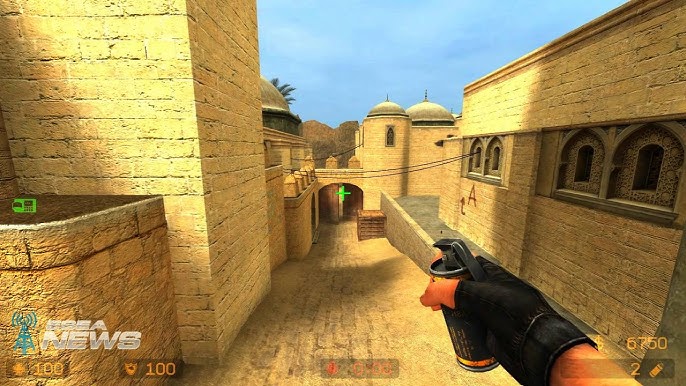
Answering the Question: What makes de_dust2 a good map?
- Strategic choke points
- Multiple flanking routes
- Balanced gameplay for both sides
- Emergent gameplay scenarios
- Easy to learn, hard to master design
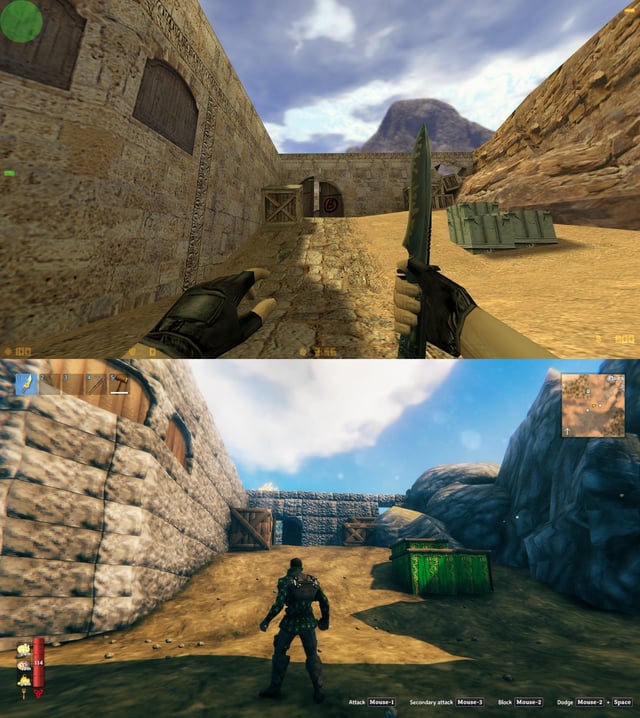
Answering the Question: How does de_dust2 encourage strategic gameplay?
The map fosters strategic gameplay through its layout, offering multiple avenues for attack and defense. The importance of map control, rotations, and economic decisions forces players to think critically and adapt their strategies on the fly.
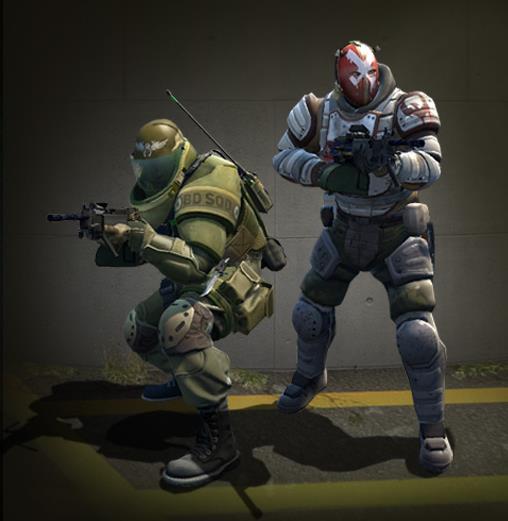
Answering the Question: How did de_dust2 influence other FPS maps?
De_dust2's influence can be seen in the design of many modern FPS maps through the popularization of 3-lane structure with a central mid area, key choke points for strategic control, and the balance between long-range and close-quarters combat.
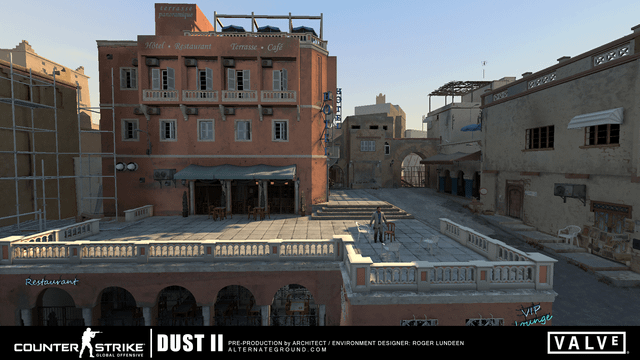
De_dust2 is more than just a map; it's a cultural icon. Its enduring legacy is a testament to the power of thoughtful level design and its ability to create memorable gameplay experiences. As I continue to explore the possibilities of VR FPS games, I'll always draw inspiration from the lessons I learned on the dusty battlegrounds of de_dust2.
If you're interested in VR level design consultation, contact us.